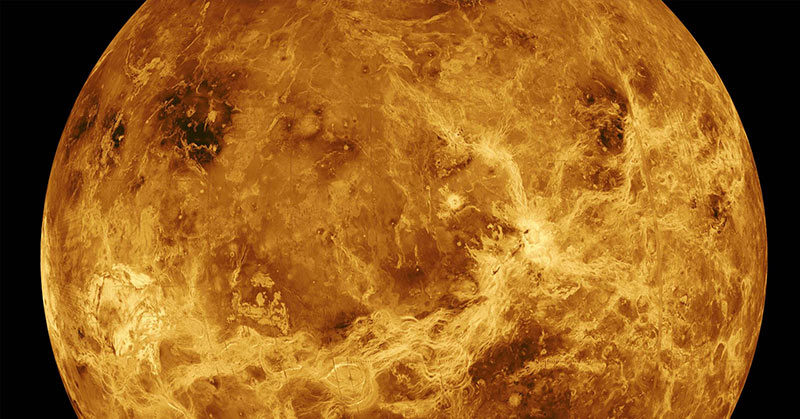Long has the question been asked as to whether or not humans are the only form of intelligent life in space. In an exciting new discovery, scientists have recently found what could be possible signs of life on Venus. This is what we know so far.
Possible Alien Life on Venus
To be clear, no, aliens have not been spotted on our neighbor planet. What scientists have found are high levels of phosphine in its atmosphere. This could be a possible sign of life on Venus. (1)
Phosphine is a rare and toxic gas that, on Earth, and smells of rotten fish. It is normally found in pond slime and penguin poop. It can be made in some industrial processes, however, in nature, it is created by anaerobic organisms. (1)
The quantity of the phosphine found on Venus has led researchers to believe that this could be a sign of life. That amount of gas can’t be explained by any other known processes. (1)
Life on Venus? How Hospitable is the Planet?
Venus is not exactly a paradise vacation spot – its hot and acidic surface makes survival there extremely challenging. Thirty-five miles up, however, is a much more livable climate. This is where the phosphine is thought to have been found. (1)
The clouds on Venus are so acidic that phosphine should quickly be destroyed. The quantity that they have found indicates that something must be actively creating it. (1)
The scientists are quick to point out that this is not definitive proof that there is life on Venus, just a sign that there is potential. (1)
“Either phosphine is produced by some sort of chemical or geological process that no-one knows about – or there could be a biological reason,” explains Emily Drabek-Maunder, an astrophysicist and one of the authors of the paper. “Our team can’t explain the amount of phosphine that we’ve found, through our current understanding of the planet. When we try to model what’s happening in the atmosphere – volcanic activity, sunlight, or even lightning – nothing recreates the amount of phosphine gas that we’ve seen.” (1)
Read: Hubble Just Made a Major Breakthrough in the Search for Alien Life
An Accidental Discovery
Prior to this, Venus wasn’t really being looked at as a potential for supporting any life due to its environment. The scientists were testing how possible it is to detect phosphine in atmospheres, using Venus as a baseline. They weren’t actually expecting to find much there, let alone in the levels that they did. (1)
This discovery has launched an interest to further study the processes on Venus that could possibly produce this gas. With more time and research they will be able to determine whether or not this is a true sign of life. A spacecraft will be sent to study Venus’ atmosphere, and hopefully, they can launch a “sample return” mission to bring back a specimen from the atmosphere for further study. (1)
Not Actual Aliens
Again, this does not mean there are aliens living on Venus like the ones we see in cartoons. Life on Venus is most likely a single-cell bacteria-like organism that lives in the liquid droplets that make up the clouds in Venus’ atmosphere. (1)
Lewis Dartnell, an astrobiologist from the University of Westminster, says that researchers will have to determine the processes that allow life to both thrive and reproduce. (1)
“If we do confirm that there is in fact life there, the next thing we’re going to want to check is if we’re related,” says Professor Dartnell. “Does it use DNA, proteins that are the same as us – or is it fundamentally alien?” (1)
If there is independent life on Venus that didn’t somehow originally come from Earth, then this could mean that there is also life elsewhere, and possibly much more robust and intelligent life at that. One thing is certain, this is an exciting discovery in the world of space exploration. (1)
Keep Reading: What Might Happen If The Earth’s Magnetic Poles Flip

